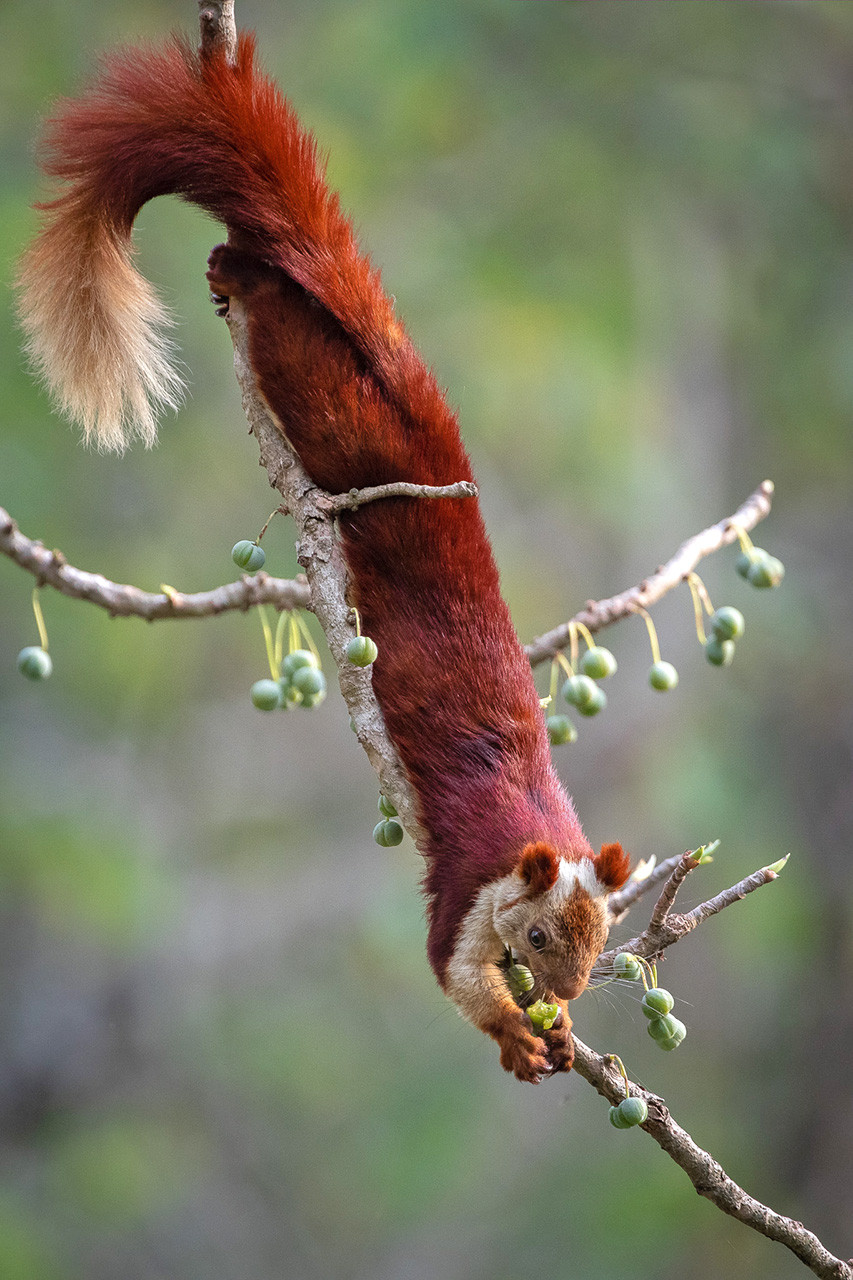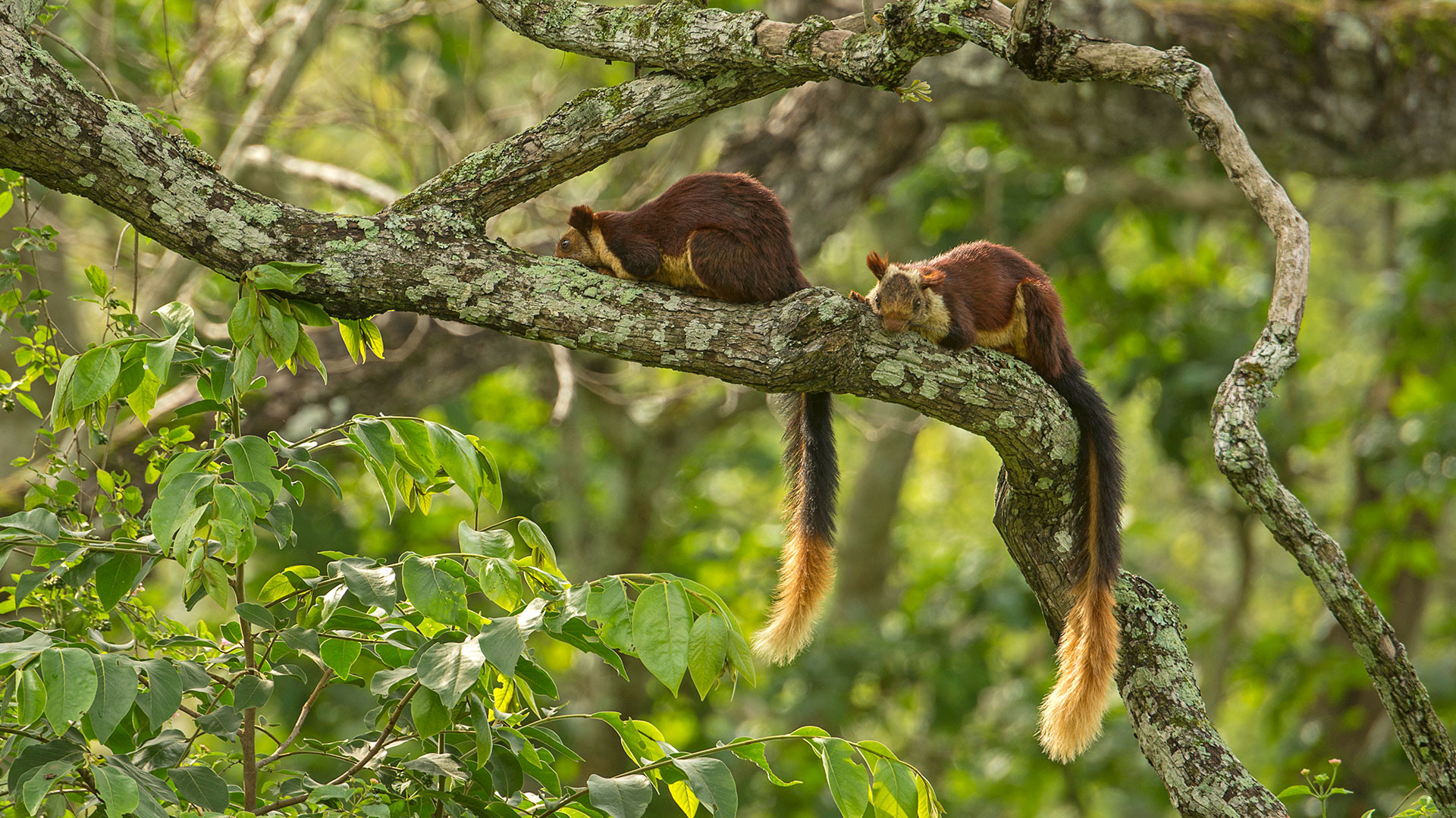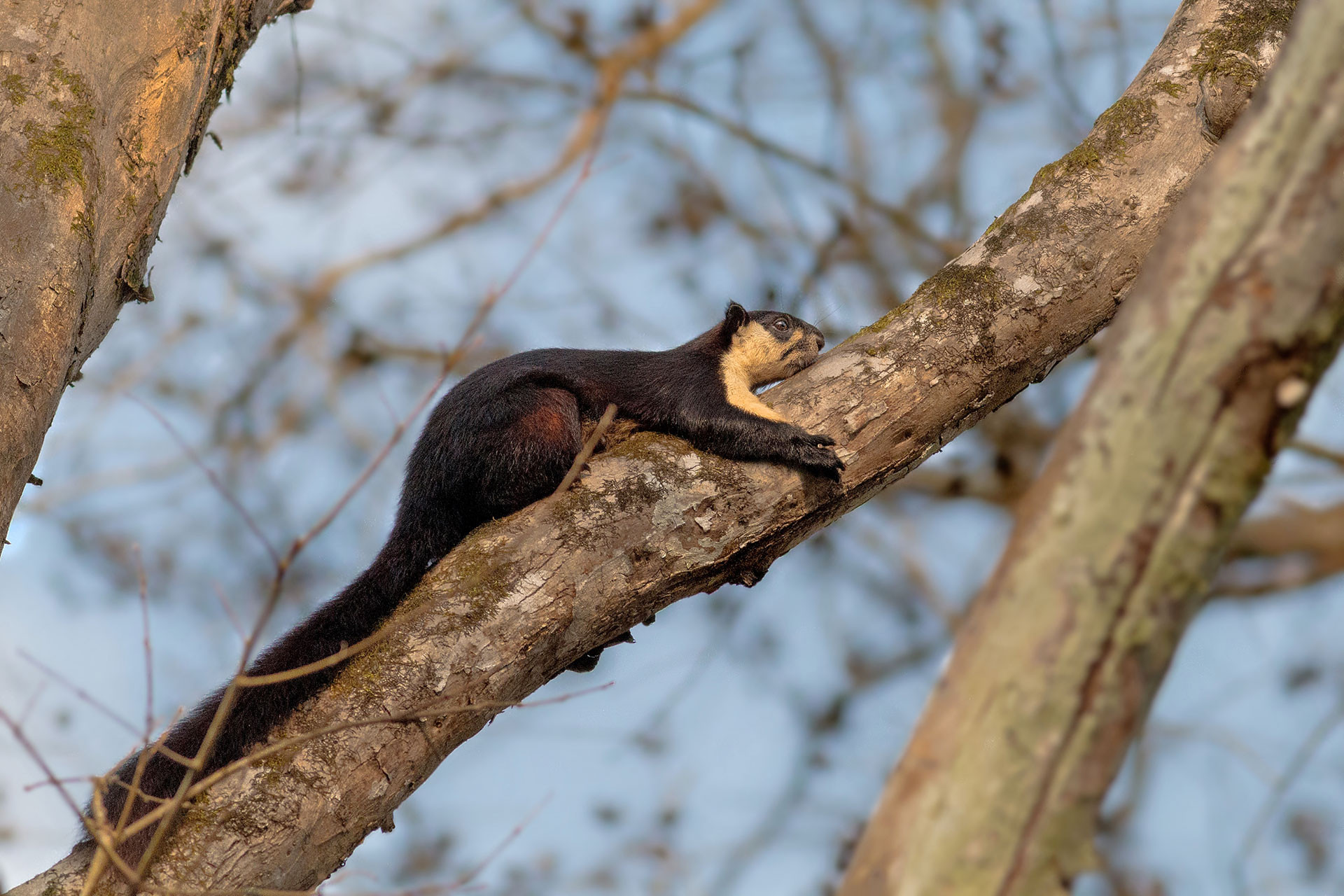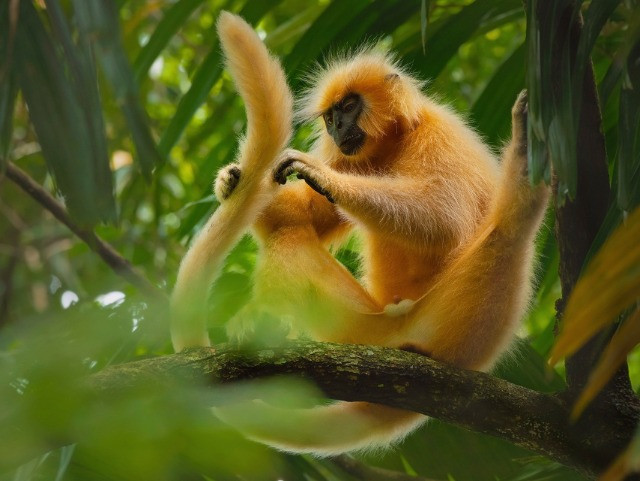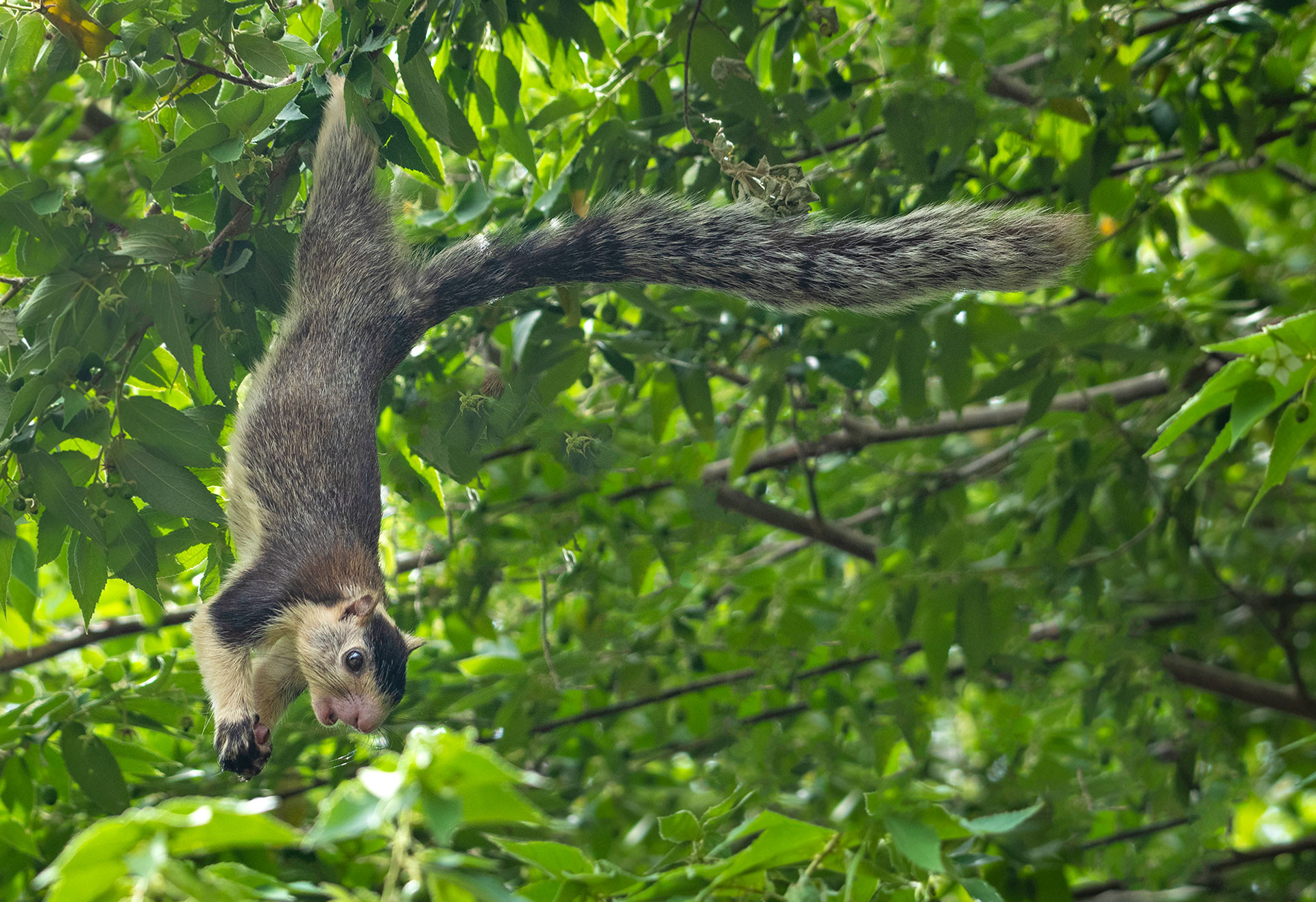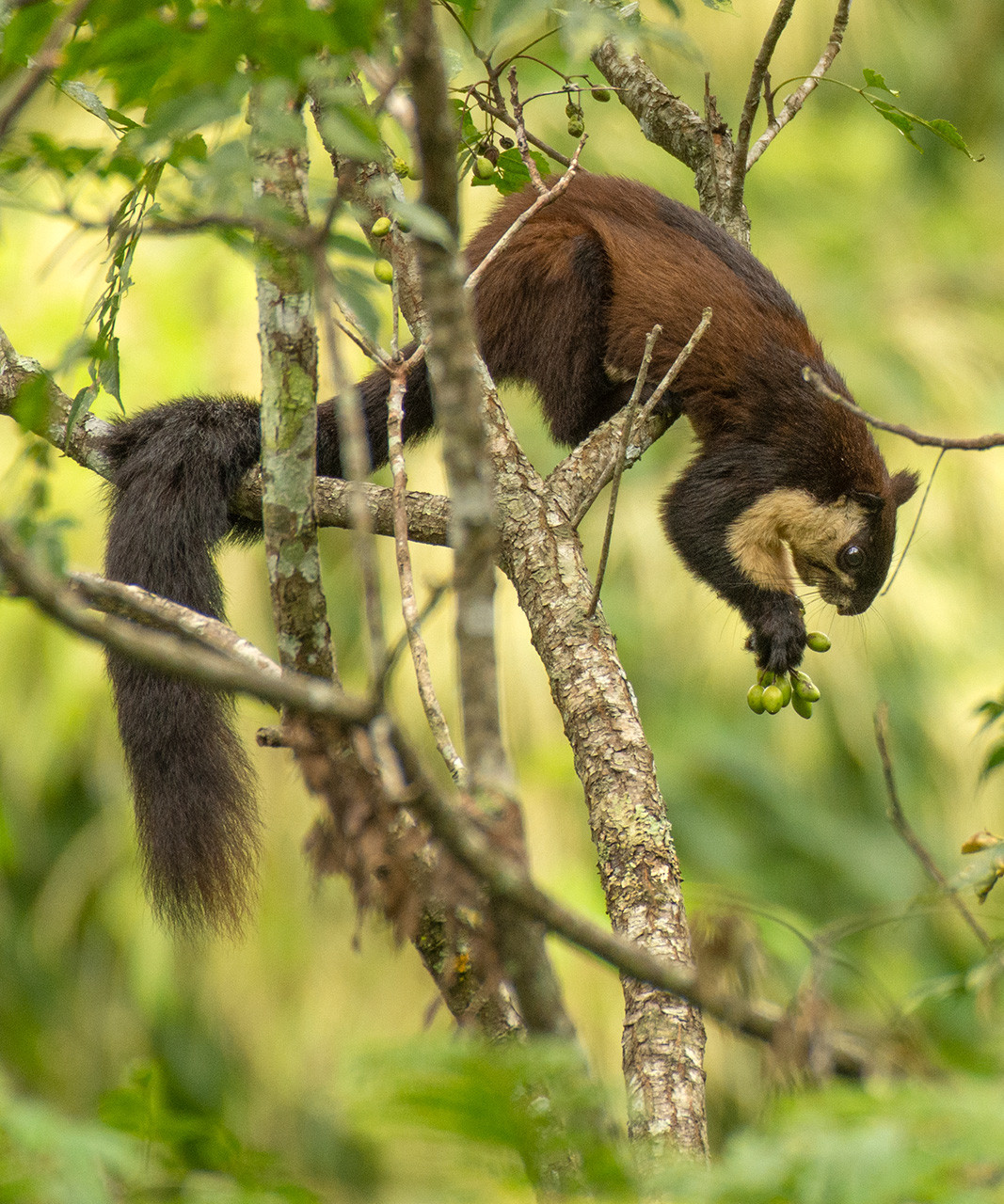The word squirrel has its origins in the Greek word skiouros which stands for ‘bushy tails’.
The relatively small creatures that are often seen scurrying up and down the trees in our backyard belong to the rodent family. The same family that also includes mice, rats and porcupines! Squirrels are further divided into tree squirrels, ground squirrels and flying squirrels, among others. There are about 268 species in the squirrel family, but we are here today to talk about just three of them—the giant squirrels of India.
Giant squirrels take their titles seriously. While the ubiquitous Indian Palm Squirrel weighs about 100 grams, giant squirrels weigh about a kilogram or more! India is home to the Indian Giant Squirrel, the Black Giant Squirrel and the Grizzled Giant Squirrel. While they share several attributes with their other squirrel counterparts, they are also unique in their own way, size notwithstanding. So here is a quick rundown of some facts about these rodents that love trees, fruits and most importantly, forests!
The Giants Of Ratufa
Giant Squirrels are members of the genus Ratufa. Like other members of the squirrel family, they also have the characteristic prominent incisors that aid them in feeding on large fruits and rough surfaces like barks. The members of this genus prefer forest areas with well-branched trees that they can use to build nests. While the Indian Giant Squirrel resides within evergreen and semi-evergreen forests, the Black Giant Squirrel prefers montane evergreen and dry deciduous forests, and the Grizzled Giant Squirrel resides in montane forests in riverine ecosystems.
Indian Giant Squirrel (Ratufa indica)
Also known as the Malabar Giant Squirrel, the Indian Giant Squirrel is every wildlife photographer’s delight. The squirrel is characterised by its rufous-brown/purple colour and its ability to quickly jump from one tree to another. The tree-dwelling squirrel is rarely found on the ground and can leap over impressive heights of about 6 metres—a skill that comes in handy when a leopard is on the prowl. Malabar Giant Squirrels feed on flowers, fruits, bark and nuts, often stretching themselves to reach the source of sustenance, and leaving a messy trail all around.
Black Giant Squirrel (Ratufa bicolor)
Did you know that the Black Giant Squirrel is one of the largest squirrel species in the world? The squirrel has pale underparts and its upperparts are characterised by a black-brown colour with slight variations based on the geographical location. The Malayan Giant Squirrel, as it is also called, is mainly found in the northeastern parts of the country and feeds on seeds, fruits and leaves. The arboreal squirrel is also known to forage from the ground.
You may also like to read
Grizzled Giant Squirrel (Ratufa macroura)
The Grizzled Giant Squirrel is also known as the Sri Lankan Giant Squirrel. The species is characterised by brown upperparts with white hair and pale underparts. If you want to encounter this giant squirrel species, you would have to travel down south to Karnataka, Tamil Nadu or Kerala where they reside in montane forests. Grizzled Giant Squirrels are strictly arboreal, coming down only to escape from predators or to find a potential mate. Apart from the usual suspects of nuts, fruits and bark, Grizzled Giant Squirrels also feed on bird eggs.
Forced Out From Their Homes
Among the three species, the Grizzled Giant Squirrel and Black Giant Squirrel are designated as Near Threatened on the IUCN Red List. Although the Indian Giant Squirrel is designated as Least Concern, its population too is fast decreasing. Due to their increased dependence on forest areas, the conversion of forest land for agriculture and developmental activities such as linear intrusion projects are significantly affecting populations across all three species. Habitat loss is also forcing the Grizzled Giant Squirrel to forage for food in farmlands, earning them the title of agricultural pests. They are killed by farmers to reduce crop damage, thus further reducing local populations.
The Tiny Giants Need Our Help
In 2020, the Zoological Survey of India conducted a first-of-its-kind survey of the Malayan or the Black Giant squirrel in the country. Squirrel numbers are intrinsic indicators of forest health and the study found that by 2050, India could lose about 90 per cent of its Malayan Giant Squirrel population, pushing the species to the brink of widespread extinction. Additionally, the study also highlights the lacunae in our understanding of squirrel populations and the threats they face. A more niche study of Indian Giant Squirrels in the Karlapat Wildlife Sanctuary, Odisha, revealed that current practices in the sanctuary cause damage to the nesting sites of the squirrels and impact their food sources. It is critical that we devise specific conservation measures for the giant squirrels in the country, if we are to see them galloping through our forests without a worry!

